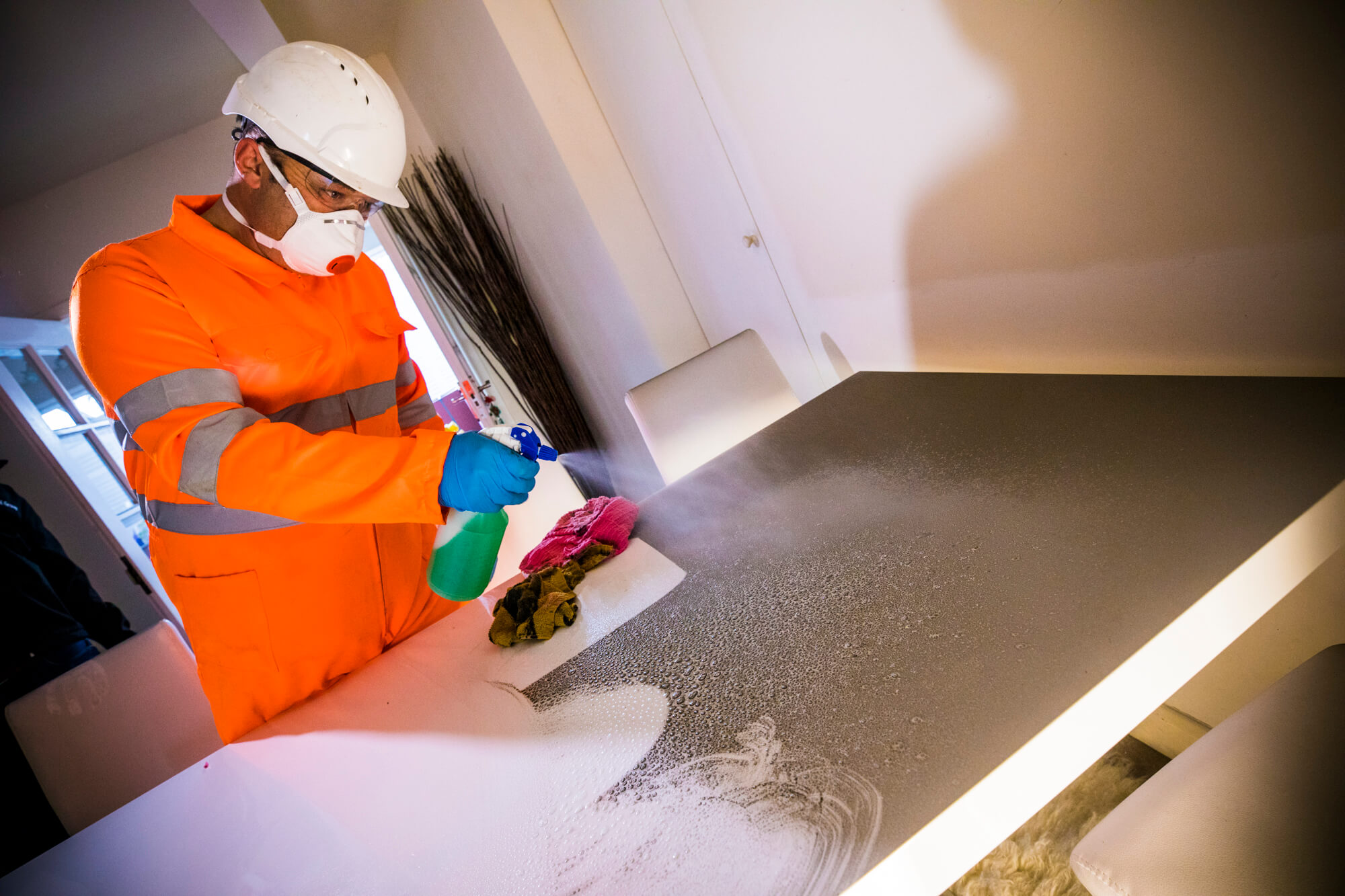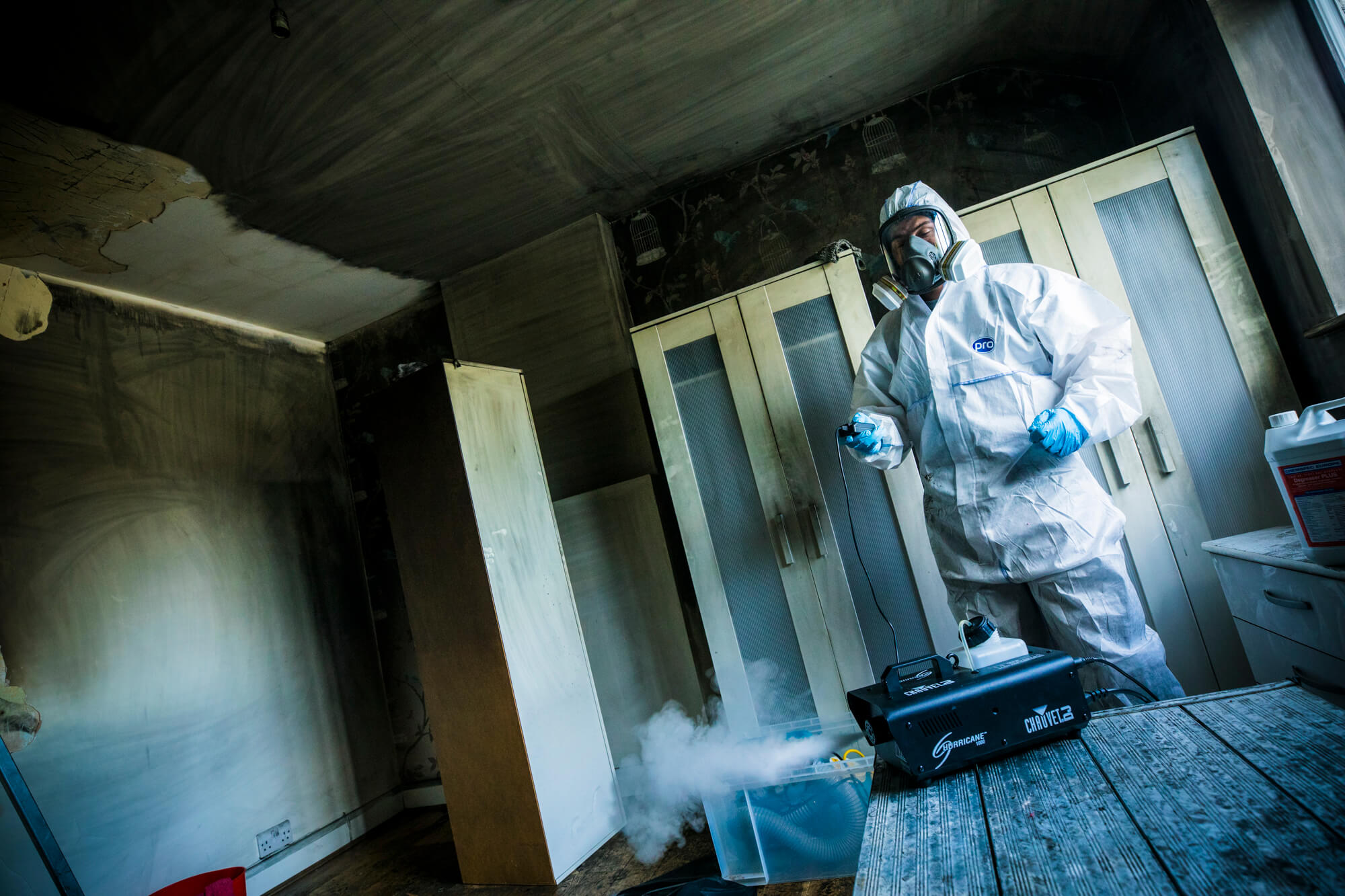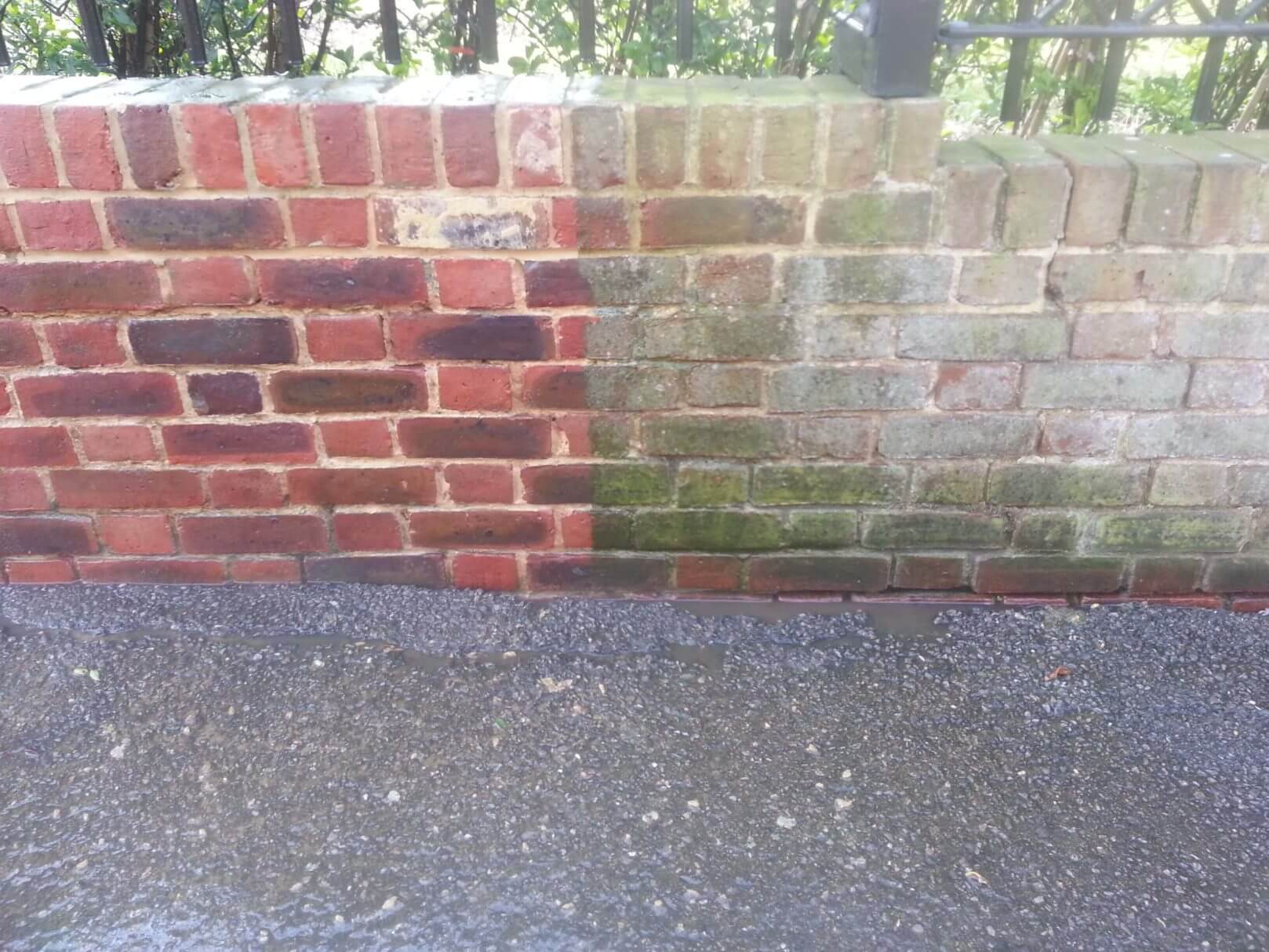The Issue
Soot and smoke can be tough to remove, even after a small fire. And not only are soot and smoke hazardous to health, they can actually carry on causing damage to a surface long after the fire has been put out.
So, how do you remove them?
Before you can remove soot and smoke, you have to firstly understand what they are. Soot and smoke are far from simple substances and their composition will change depending on what has burned.
What is Soot?
Soot is the product of incomplete combustion, ie. the burning within a limited supply of oxygen. And depending on the substances that have been burned, soot will contain a combination of chemicals, metals, soils, dust and acids.
Soot is extremely small, much smaller than the dust you see floating in the air. And given its size and light weight, soot can travel far from its original source. The combination of its size and toxicity makes soot particularly hazardous to health.
Interesting fact: Apart from the hazards to health and damage to property that soot causes, research published by the Journal of Geophysical Research suggests that soot is the second largest cause of global warming.
What is smoke?
Smoke is emitted when a substance undergoes combustion. It is a visible, airborne substance that is mainly made up of carbon particles. Just like soot, the components of smoke will be determined by what has actually burned. Smoke can not only contain carbon, tar, oils and ash, it can also contain thousands of chemicals. Smoke is an irritant and can be highly toxic.
How to remove soot and smoke

For significant amounts of fire damage, it is always advisable to hire a professional fire remediation company. If remedial work is done incorrectly or inadequately, secondary damage will continue to pose a problem for both your building and your health.
Large amounts of soot and smoke will require specialist knowledge and equipment, particularly if different substances have been involved in the fire as the soot will be more complex to remove.
If you do attempt to remove soot and smoke yourself, it is essential that you follow health and safety advice. Remember, fire remediation professionals often have to wear full face masks among other PPE (personal protective equipment) while carrying out their work.
If you’re unsure about anything, always seek the advice of professionals before attempting any work yourself. An incorrect attempt to remove soot and smoke could end up causing further or even irreparable damage.
Below, we give some general advice if you’re looking to attempt soot and smoke removal yourself.
How to remove soot and smoke for light residue and/or limited damage
- After a fire, never enter any structure unless you have been told it is safe to do so by a professional.
- Ensure all areas where you’re working are well ventilated.
- Wear appropriate Personal Protective Equipment (PPE) to protect lungs, eyes, skin and body. This includes gloves, goggles, footwear and a respirator. Guidance can be found here.
- Remove any items that are unsalvageable and install dehumidifiers if water has been used as an extinguisher; excess moisture will cause the growth of mould.
- For carpets, use an extraction machine or enlist the services of a professional carpet cleaner. Avoid impact as this will embed the soot into the material.
- For hard, porous materials (eg. wood, wallpaper, plaster, paint, wallboard, MDF), use a dry chemical sponge but avoid adding moisture, this will cause the soot to become absorbed into the material.
- For hard surfaces that are less porous (eg. tile, glass, treated wood, metal, appliances), use a damp sponge or mop with appropriate detergent.
- Fabrics may require professional and specific cleaning. An upright vacuum can force soot deeper into the fabric. Using an appropriate vacuum with adequate filters to withhold soot particles (ie. a HEPA rated vacuum), hold the nozzle a small distance away from the fabric to lift soot away from the fabric.
- Cover items as they are cleaned to prevent re-contamination.
- Don’t forget to remove fixtures and fittings and clean all spaces, ducts and vents thoroughly. Any soot or smoke left will continue to present a hazard to your health and could continue to damage your property.
How to restore significant fire damage and remove heavier soot and smoke residues

Significant fire damage and heavy soot and smoke residues should only be tackled by professionals with the appropriate level of expertise and correct equipment. Time and costs could escalate if the remediation process is not carried out effectively in the first instance.
There are a variety of techniques that can be used, all dependent on the specific situation and materials involved – we have listed these below. The hazards caused by fire require specific knowledge, techniques and equipment to ensure no risks remain.
Chloride testing
The chloride residues left by a fire will cause irreparable damage to the structures they contaminate throughout the building. They are highly toxic and hazardous to health and if undetected, will continue to cause damage in the long term. The correct chloride detection method should be applied throughout the site to inform the cleaning process. This stage is vital to protect personnel and property.
Wet and dry cleaning
Wet and dry cleaning is used for varying grades of carpets, upholstery and fabric. Dry cleaning methods should be carried out by professionals as they utilise specific counteractants specific to the type of fire that occurred. Wet cleaning involves the application of detergent solutions to fire damaged textiles and may require soaking first. Professional advice should be sought before attempting.
Sodium bicarbonate blasting
This technique is used for the removal of residue, corrosion, grease and oil from surfaces. It is an eco-friendly and bio-degradable method of removing residues without chemicals, but with minimal damage to surfaces. Suitable for metal, timber and brick, and internal and external surfaces that are more challenging to clean.
Air scrubbing
The acrid odour that lingers after a fire is caused by residues such as soot. Air can be filtered and sterilised if necessary to remove all hazardous particles including pathogens. This process should be undertaken by trained technicians.
Ultrasonic cleaning
A cleaning system that uses energy in the form of high frequency signals to effectively remove deeply embedded soot and smoke particles. This process should also be carried out by qualified and experienced technicians.
Sanitation and decontamination
All contaminated material must be removed and disposed of correctly or thoroughly cleaned using appropriate techniques. Complete decontamination should be followed by testing and certification.
It’s important to remember that soot and smoke will permeate every part of a building and thoroughness is absolutely paramount to ensure all risks are eliminated.
The Hazards of Soot and Smoke
The risks posed by fire damage remediation are serious and should not be taken by any person who is unskilled or untrained to do so. But what makes soot and smoke so hazardous?
Soot hazards
Soot contamination is a serious issue that cannot be left; it needs to be dealt with correctly and immediately to minimise harm.
- Soot is a respiratory hazard, it enters the respiratory system during inhalation and can penetrate lung tissue as far down as the alveoli where gas exchange occurs
- Soot is acidic, corrosive and will damage the surfaces it contacts
- Soot has been linked to a significant increase in the number of deaths from lung cancer
- Soot is classified by the [EPA] as a “criteria pollutant”, an air pollutant
- Soot can contain highly toxic chemicals that are hazardous to health and could contaminate the environment
- Smoke can contain poisonous gases such as hydrogen chloride and carbon monoxide
- Smoke is an asphyxiant, an irritant and can be highly toxic
- Smoke obscures visibility causing disorientation
- Smoke contains compounds which are flammable; potentially self-igniting if enough oxygen is present or re-igniting when in contact with flames
- Smoke damages buildings, often more so than the fire itself
- Smoke will stain and leave a powerful odour that is very difficult to remove
If you have any doubts about soot and smoke removal or fire damage restoration services, always consult the advice of a well respected and reputable professional fire restoration provider. At Ideal Response, we have plenty of experience in cleaning. Read how we helped a property in London with soot and ash clean up.



